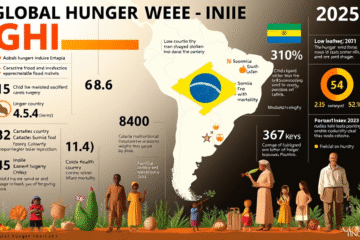OPEC+ Increases Daily Oil Production by 137,000 Barrels
Daily Production OPEC+ oil production is about to undergo a significant adjustment, with a 137,000 barrel increase scheduled for October.
This move is part of a broader gradual recovery plan, which seeks to balance the oil market in a global scenario full of challenges.
In this article, we will explore the implications of this decision, the recent history of production increases, and how this relates to price dynamics and pressure on major exporters such as Russia.
OPEC+ decision and the objective of the market adjustment
OPEC+ decided to increase daily oil production by 137 thousand barrels starting in October as part of a strategy to gradually resume 1.65 million barrels per day, as indicated in official statement.
This decision comes in a delicate global context, where volatility prevails in the oil market.
The strategy seeks to balance supply and demand, while avoiding excessive pressure on prices in an already tense international scenario.
Markets have faced significant challenges throughout the year; consequently, OPEC+ is adopting a cautiously optimistic stance as it closely monitors changes in market behavior.
This measure is expected to contribute to a more equitable distribution of oil resources and avoid price destabilization which could result in adverse economic consequences for countries dependent on this commodity.
Schedule for gradual refund until September next year
Discussions surrounding the official OPEC+ timetable for the gradual reinstatement of 1.65 million barrels per day by September next year have highlighted the importance of careful adjustments to the plan.
The cycle began in October with a modest increase of 137 thousand barrels per day.
Subsequent steps will follow progressively, considering the ongoing pressure from the global market.
A vital factor that can influence the speed of this timeline includes supply and demand conditions, which will determine whether increases can be brought forward or delayed.
October was just the beginning, and production should gradually increase over the following months, although the main decisions will be made based on market developments.
Attention to detail in the phases following the first stage in October will be crucial to avoid drastic impacts on prices or inventory buildup, something relevant given the current unstable economic scenario.
| Date | Amount (millions) | Observations |
|---|---|---|
| October | 0,137 | First stage |
Future decisions and any adjustments to the schedule will depend on the state of supply and demand, according to market impact demands adjustments in the pace of production increase.
Analyses will continue to ensure adequate adaptation to dynamic industry conditions.
Recent history of accelerated increases (April-September)
Between April and September, OPEC+ reestablished an increase in production of 2.2 million barrels per day without there being a reduction in prices or a significant accumulation of stocks.
This phenomenon can be explained by a combination of fundamental factors that acted to stabilize the oil market.
During this period, the Asian demand on the rise was a crucial factor in absorbing the increase in supply.
Additionally, some regions outside OPEC+ maintained strategic supply cuts, which helped prevent inventory buildup.
Another relevant element was OPEC+'s ability to proactively monitor and adjust its production strategies, which provided an agile response to market changes.
Thanks to these measures, the cartel has achieved a delicate balance, allowing OPEC+ to not only effectively expand production but also to sustain prices at a desirable level, ensuring profitability and stability in the global oil market.
Market outlook and geopolitical impacts
The recent gradual increase in oil production by OPEC+ reveals a cautious optimism in relation to the global market.
Despite the fall of 12 % in oil prices in 2023, as reported by Click Oil and Gas, the OPEC+ decision seeks to balance supply without destabilizing prices.
The strategy adopted reflects a scenario where demand for oil is still under economic uncertainty and trade tensions.
However, the organization works to ensure the market resilience, in the midst of these difficulties.
Furthermore, one of the most notable geopolitical effects of increased production is the pressure on Russia.
As one of the largest oil exporters, Russia faces challenges in maintaining its market share.
With more production available, consumer countries have greater bargaining power, which requires a strategic response from Russia to protect its economic interests.
O cautious optimism OPEC+ appears to ease some of these tensions, but the situation still demands attention for future geopolitical impacts.
On the other hand, the market resilience This is evident from the way in which he absorbed the increased production without accumulating unwanted stocks.
This gradual adjustment allowed a certain stabilization, as stated in InfoMoney, leading to a reduction in initial concerns of oversupply.
With production stages planned until September of next year, the market demonstrates its ability to adapt, even in a scenario where the price variable fluctuates considerably.
Such adaptability is crucial, considering the strategic role of oil in the global economy and the political dynamics involved in its production and distribution.
In summary, OPEC+ is showing cautious optimism about increasing its production, which could bring relief to both the global economy and oil prices.
Market resilience in the face of current tensions continues to be a crucial factor in the organization's decisions.



0 Comments